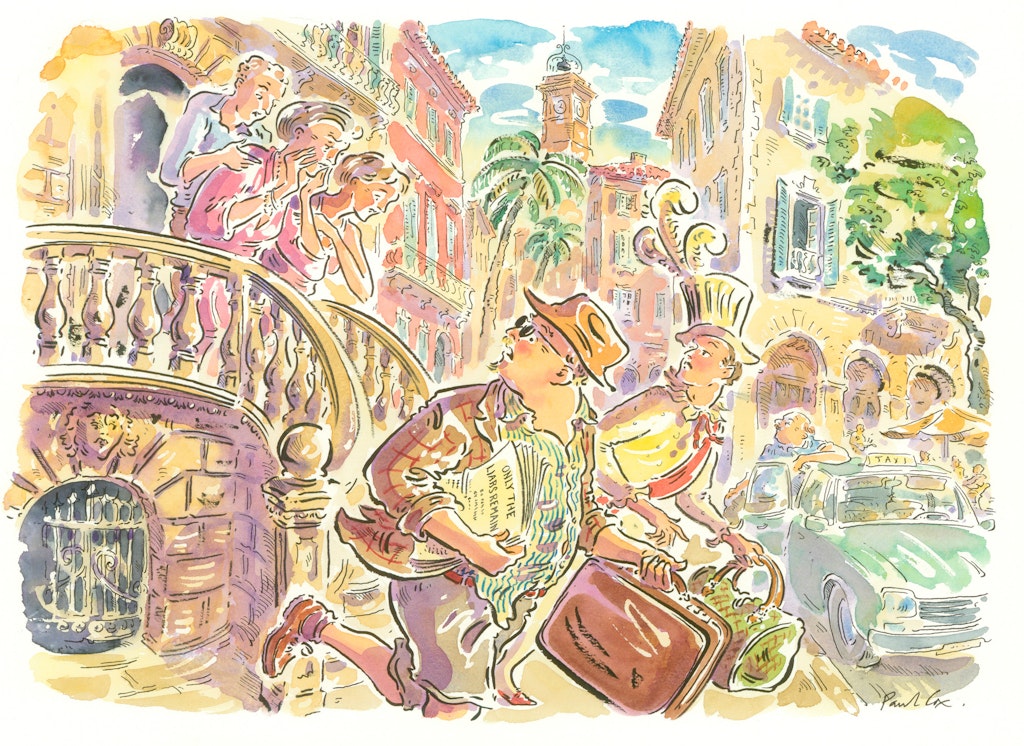Struggles of a veteran matador
Familiarity can make the heart grow cooler, but greatness can still prevail
Last week, in Seville’s exquisite eighteenth-century bullring, a fierce, charcoal-grey bull called Disparate (“Cock-up”) hurled a matador across the startlingly yellow sand. Disparate’s right horn tore open the man’s thigh, penetrating six inches, somehow missing the artery.
The matador, an amiable Andalusian called Manuel Escribano, is brave. In the ringside infirmary, he insisted on having his leg sewn back up without anaesthetic, so that he would be able to face his other bull. The order of the animals was changed, so that his second bull appeared last, giving the surgeons time to do their work.
When Escribano reappeared, his sequinned trousers replaced by a pair of jeans lent by a local footballer called Chimy Ávila, who happened to be watching, he was visibly injured. Still, he began, as he usually does, on his knees before the gate through which the bull enters, deflecting it from him at the last minute by drawing the cape one-handed in an arc over his head, a courageous opening known as a “portagayola”.
The crowd went wild, cheering every step of the heroic performance that followed, in which the hobbling Escribano insisted on placing his own banderillas, and worked with exemplary proximity to the horns, winning himself two ears from Seville’s famously exacting public.
Partly to underline their devotion to their local hero, they turned against Peru’s Andrés Roca Rey, currently the best torero in the world. Before I come to the fascinating topic of taurine crowd psychology, though, I need to explain something about the bulls themselves.
The main division in the taurine world is between people who go mainly to see the matadors (“toreristas”), and people who go mainly to see the fiercer strains of animal (“toristas”).
You have to pick one or the other, because the top matadors appear almost exclusively before bulls that allow them to demonstrate their artistry. In other words, they demand breeds (castes, as they are known) that charge predictably and cleanly, a characteristic that aficionados call nobility.
Ninety per cent of bulls that appear in first-category plazas are of noble castes — castes dismissed by toristas as bland and commercial. Toristas prefer bloodlines that communicate danger: animals that learn to distinguish between man and lure, that lunge suddenly, that hook unpredictably.
The most famous torista strain is called Victorino. These are cunning, fickle bulls with distinctive slate-grey pelts. The eponymous founder of the ranch, the father of the current owner, was determined to breed something dangerous. “The worst cancer in toreo is a bull that barely bothers you,” he said, not long before his death in 2017 at the age of 88. “A brave bull should be demanding and disturbing. He should make you sweat.”
In a profession full of hereditary landowners, Don Victorino was immediately recognisable, a short, blunt man with calloused hands and a strong accent, known as El Paleto — the Yokel. His animals were bred in his own image.
Like their creator, Victorino bulls are low to the ground and grizzled (“cárdenos” in taurine parlance). Like him, they do not stand for any kind of showing off. Like him, they are of plebeian origin: he bought his first animals from a failed herd that was on its way to the butcher.
If bulls from the nobler castes may be likened to courageous but dim-witted knights, Victorinos are sharp-eyed, crafty peasants. Matadors fear them, and spectators love them.
I said earlier that the top matadors, the figuras, don’t appear before bulls from the fiercer castes. But, sometimes, in order to maintain their reputations, they make an exception. Roca Rey, whom I have profiled and interviewed in these pages, was making such an exception in Seville, and it was the most keenly anticipated encounter of the season.
By any measure, he did well with the material he had. His Victorinos had all the guile of their kind, sideswiping at the end of each pass and searching for the solid form. But he worked closely and gracefully, keeping his feet still and giving some beautifully deep passes.
The crowd was having none of it. The toffs who fill Seville’s Maestranza sat in silence through at least two series of passes that would have brought any other bullring to its feet. The plaza band, which is meant to strike up when a matador performs well, remained quiet. In the silence, disparaging whistles could be heard.
Put simply, Roca Rey has been número uno for too long
What was going on? If you watched the encounter on television, you might well wonder. The commentators on the main taurine channel, OneToro, were flummoxed. In the ring, however, the explanation was clearer.
Put simply, Roca Rey has been número uno for too long. His reputation is such that no one can live up to it — not even Roca Rey. I have written before about the curious way in which the greatest matadors fall short of expectations.
Even Manolete, whose death in 1947 traumatises Spain to this day, was on the receiving end of this curious phenomenon. The famous Mexican bullfighter Carlos Arruza recalled their last meeting at the plaza in San Sebastian. Manolete had turned in a brilliant performance with difficult bulls, repeatedly and recklessly exposing himself. But the crowd remained grimly silent.
“Fuck it, Manolo, what else do they want from you?” asked Arruza. “I know exactly what the bastards want,” replied Manolete grimly. “And I might just give it to them.” Two days later, he died on the horns of a Miura bull called Islero in the undistinguished bullring at Linares.
Incredibly, even Joselito was jeered in Madrid not long before his own fatal goring in 1920. Roca Rey, in other words, is in good company — though, inshallah, he will not end the same way.
Sevillians were looking for a peg on which to hang their doubts. They found it in Roca Rey’s reported refusal to appear alongside Daniel Luque, who has been having a phenomenal season, and whose style would have complemented Roca Rey’s beautifully.
Did I mention that Luque is from Seville? So is Escribano, the matador who took the goring. So is Borja Jiménez, the third man on the cartel alongside Escribano and Roca Rey. No country in the world has stronger local patriotisms than Spain, and the hidalgos of the Maestranza are as parochial as anyone else. Peru’s taurine critics put their countryman’s frosty reception down to pure Sevillian chauvinism.
But there was one more element. In the ring, unlike on television, where you have the benefit of close-ups and replays, people often see what they were expecting to see rather than what is actually happening. The idea of Roca Rey as an artistic rather than a technical torero is so embedded that few opened their eyes to how delicately he was handling those ornery Victorinos.
It was a neat demonstration of why a great bullfight cannot be experienced on TV. When you enter a bullring, you enter a magic circle, cut off from the rest of the world, where the crowd face one another as well as the action. Modern life is increasingly virtual, playing out on screens, with representations of things standing in for the things themselves.
But in the plaza, our noses are rubbed in reality. We smell the cigars, the horses, the bulls and, afterwards, the blood. The sacrifice happens before us, meaty and immediate, open to the skies. The rite proceeds as the light fades, a reminder that, like Bede’s sparrow, we have only the briefest moment in the mead-hall.
These things draw the spectators together like no other performance. They give the crowd a collective personality, a shared mood. Sometimes, that mood is ecstatic. Sometimes, as last week, it is cold.
Yet Roca Rey had the final word. Seven days later, on 20 April, he drew two fine bulls by Victoriano del Río — a commercial breed, yes, but one currently having a purple moment. He gave the kind of performance we dream of as we approach an arena, with the fullest possible repertoire and two perfect blades. Seville, displaying an aristocratic awareness of having let itself down earlier, awarded him three ears and carried him in triumph from the ring. Sigue siendo el rey. He’s still the king.
Enjoying The Critic online? It's even better in print
Try five issues of Britain’s most civilised magazine for £10
Subscribe














